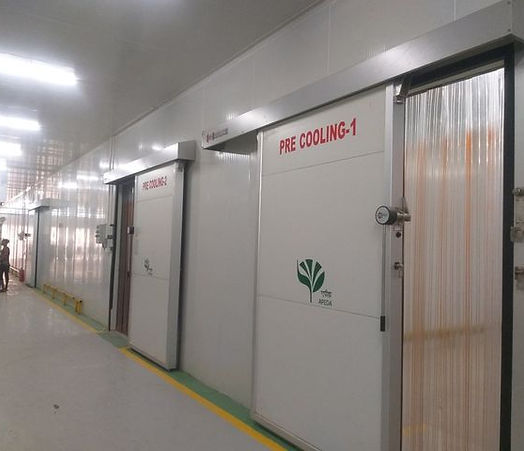
COLD STORAGES & COLD ROOMS

Cold storage and cold rooms are essential facilities for preserving perishable products like food, pharmaceuticals, and other temperature-sensitive items. These environments are designed to maintain controlled temperatures ranging from slightly below ambient to sub-zero, depending on the storage needs.
The construction of cold storage facilities involves materials and technologies that ensure effective insulation, energy efficiency, and temperature regulation.
Key Components
1. Controlled Environment: Clean rooms maintain strict control over environmental factors, including particulate contamination, temperature, humidity, air pressure, and airflow.
2. Positive and Negative Pressure: Positive Pressure: Clean rooms typically maintain higher air pressure inside the room compared to adjacent areas...


Types
1. Chilled Storage (0°C to 5°C): Used for storing fresh products like fruits, vegetables, dairy, and meat. Ensures products remain fresh by slowing down the spoilage process caused by bacteria.
2. Frozen Storage (−18°C to −25°C): Used for long-term storage of frozen food items, including meat, seafood, and ice cream...


Applications
1. Food Industry: Essential for preserving perishable products like fresh produce, dairy, meat, poultry, seafood, and frozen food items. Cold storage helps maintain food quality, prolong shelf life, and prevent food waste.
2. Pharmaceutical Industry: Cold rooms are vital for maintaining the efficacy of vaccines, drugs, and biological samples that need precise temperature control.


Benefits
1. Energy Efficiency:
Modern cold storage facilities use highly insulated materials (such as PIR and PUR panels) that reduce heat transfer, lowering energy consumption and operational costs.
Challenges & Considerations
1. Energy Consumption: Cold storage facilities require significant energy, especially in larger installations. Selecting energy-efficient refrigeration systems and insulated materials is crucial.
